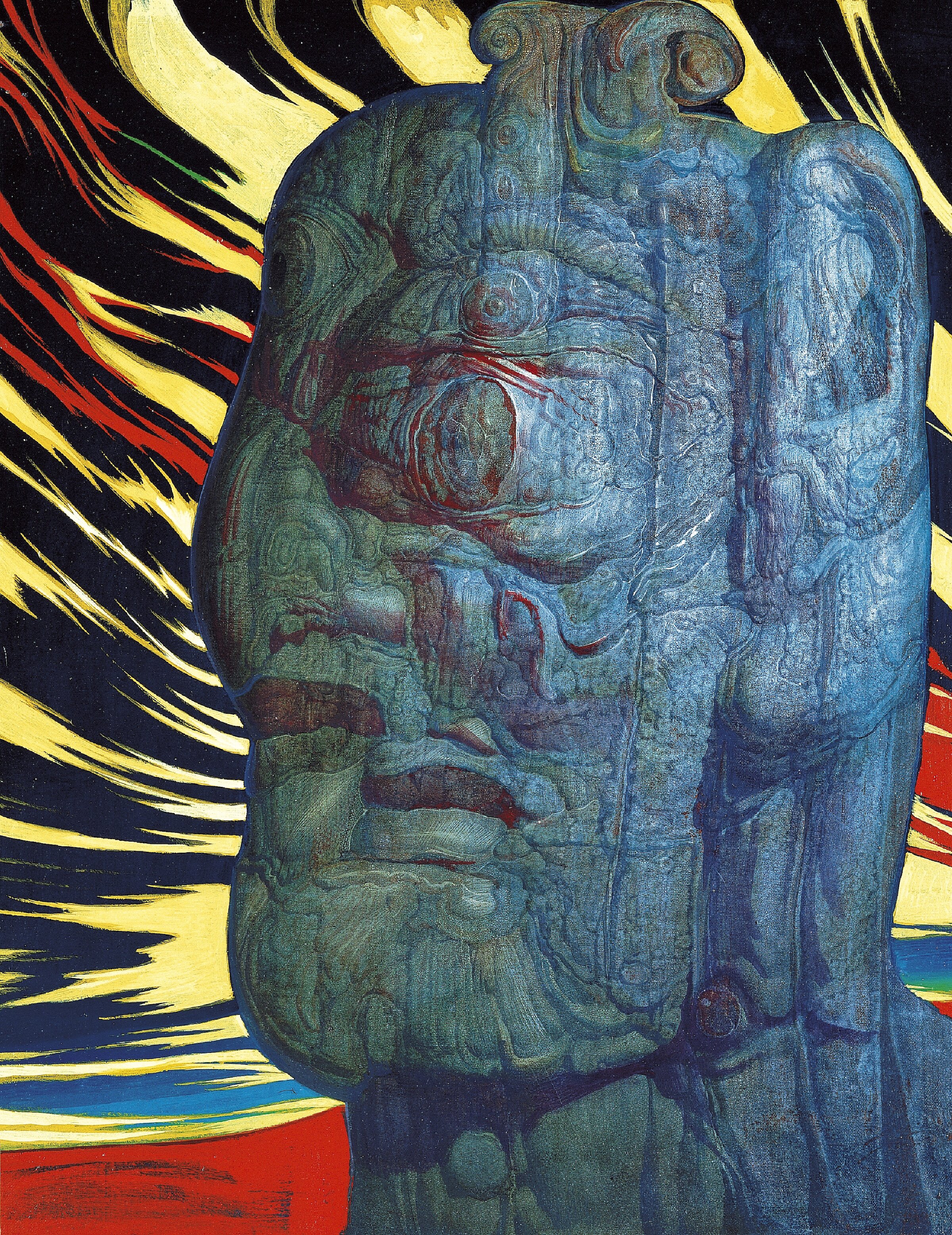Ernst Fuchs

Ernst Fuchs, Cherub wie Tag und Nacht, 1974
Oil and egg tempera mixed technique
71 x 58 cm, frame: 105 x 90 cm
Courtesy Ernst Fuchs Private Foundation, Vienna, © Ernst Fuchs Werkvermittlung
Ernst Fuchs is a key figure in Fantastic Realism. In 1945, more or less directly after the end of the war, he began his studies at the Vienna Academy of Fine Arts in the class of Albert Paris Gütersloh, and through this class he met Arik Brauer, Rudolf Hausner, Wolfgang Hutter and Anton Lehmden.
Through stays in Paris, on the east and west coasts of the USA, Italy, and Israel, Fuchs came to know both contemporary surreal-figurative paintings and sculptures by Pablo Picasso, Max Ernst, and Giorgio de Chirico. During this time he also studied Christian and non-Christian art history, each of which seem equally important in his own work. Mystical and religious motifs very naturally coexist in his oeuvre, which is not restricted to painting and drawing, but from an early stage also included designs for architecture, furniture, wallpaper, and jewelry, and later stage sets and sculptures as well as a parallel literary output.
During the late 1950s and the 1960s, numerous national and international exhibitions were devoted to Fuchs and his young colleagues, thus making them important figures in the international art scene.
At this time, Wieland Schmied described the painter as follows: “Ernst Fuchs is, on the outside, the most conspicuous of the group of friends. At the young age of twenty he already looked like a patriarch, a prophet, a biblical figure with long flowing hair, a long beard, full of faith and doubt, restless and thoughtful, with large burning eyes and his deliberate, complicated and long answers, almost always on the move, in Vienna, in Paris, in Israel, in New York, everywhere with a clique of faithful followers around him, but without any allures, and yet never without a certain bathos, never without his earnestness, passion, and inner fire.”1
In 1988, Fuchs opened a private museum in the “Otto Wagner Villa” in Vienna’s Hütteldorf district. The villa had been built in 1888 by the renowned architect Wagner with architectural references to Palladio, and Wagner was the first resident. Fuchs renovated the villa, which is still a private museum today, devoted to the preservation and presentation of Fuch’s work. The work on show in this exhibition, Cherub wie Tag und Nacht (Cherub Like Day and Night) (1974), is from the museum’s collection. A cherub is a supernatural being that appears in different guises in Abrahamitic religions as a servant or companion of God. In the Near East, cherubs have the two main functions of guarding (they protect the tree of life) and carrying (they bear the divinity). In Fuchs’s depiction the cherub is portrayed within a diffuse landscape and a hint of a horizon line. The figure itself has some human proportions, but the texture of its “skin” consists of fragments of ancient buildings and marble pillars that are arranged like muscle tissue. Fuchs thus gives the guardian of God strength and stability, while also taking him away from humanity and our everyday world into darker realms.
In 1987, Fuchs and Manfred Fuchsbichler were commissioned to redesign St. Jacob’s church in Thal near Graz. This was not the only work that Fuchs did for the church, but it is certainly one of his most impressive works on a building that we can still see today. Based on the original building from the eleventh century and complemented with a new extension, existing and new elements in the interior and exterior are like a total work of art. As part of the program of events for this exhibition, HALLE FÜR KUNST Steiermark is organizing an excursion with a guided tour.
- Wieland Schmied, Malerei des Phantastischen Realismus, Vienna/Hanover/Bern 1964, pp. 39 ff.